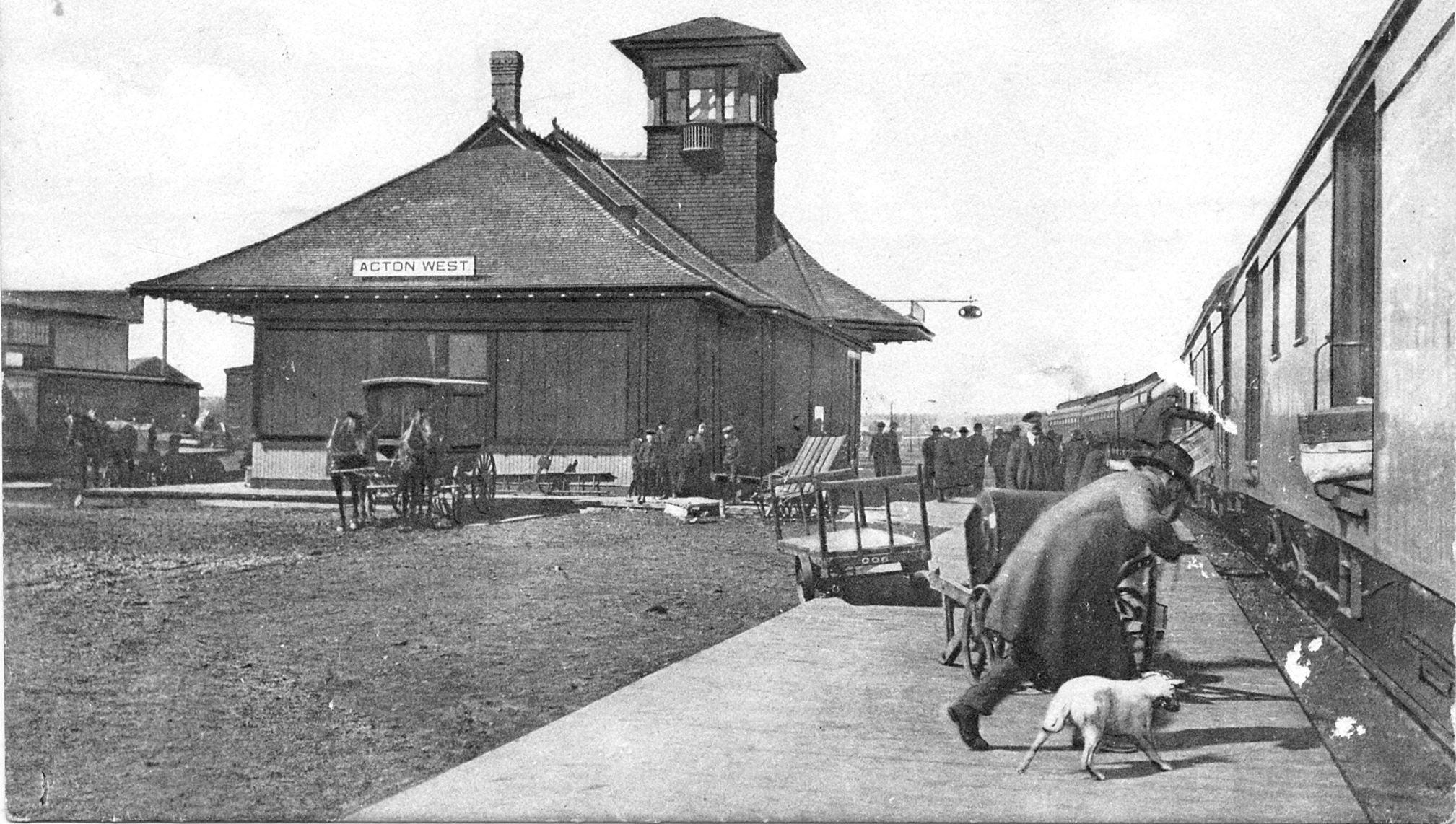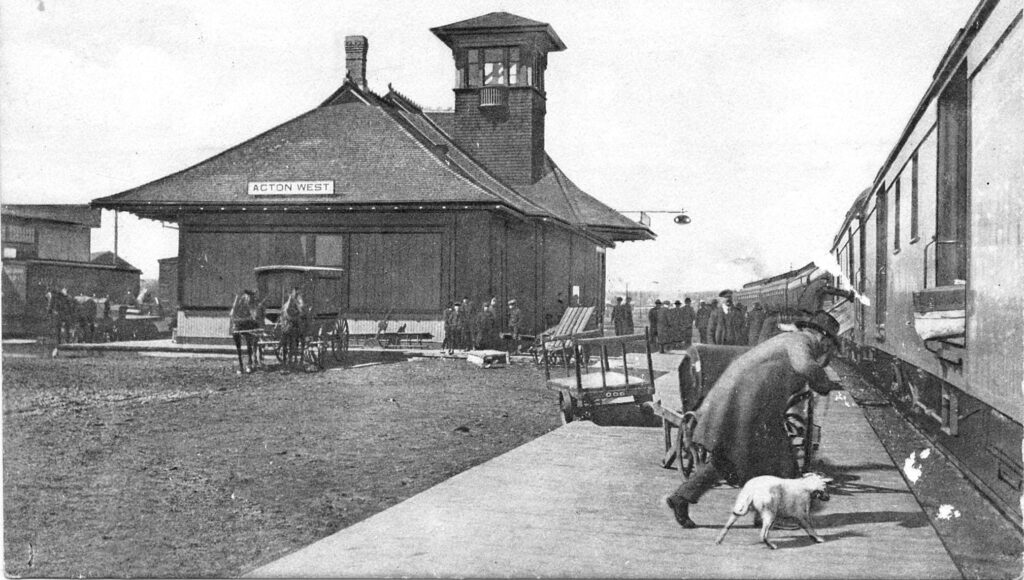Summary
The first station in Acton was built by the Grand Trunk Railway in 1856 while construction was progressing westward from Toronto. East of the city, the Grand Trunk had exclusively built their stations from limestone, but west of the city some were built from wood or brick to save on construction costs. Acton was one of these stations built predominantly from wood, though otherwise resembling the other Grand Trunk station designs of the time. It was a rectangular structure with a pitched roof, containing basic amenities required for a community as small as Acton was at the time. The arrival of the railway brought prosperity and growth to the local community, which was incorporated as a village in 1874. That year, the railway was changed from its original gauge of 5 ft. 6 in. to the standard 4 ft. 8.5 in. gauge.
The Grand Trunk’s capacity was expanded from single track with passing sidings to continuous double-track between Toronto and Sarnia by December 1905. Around the same time, Acton’s original station had become inadequate for the growing needs of the community. A much larger replacement was constructed by the Grand Trunk in 1908 featuring numerous architectural embellishments commonly seen in the Victorian and Edwardian eras. Most notably, it featured a pair of towers, the larger of which was located above the station agent’s office. It was rectangular with a pyramid-shaped roof. A smaller, conical tower with a distinct “witch’s hat” roof was located above a turret at the southwest corner of the building. In later years, the larger tower was removed entirely.
The Grand Trunk encountered financial difficulty during and after World War One, resulting in its nationalization in 1923 and subsequent merger into the newly-formed Canadian National. A total of 10 passenger trains stopped at Acton on a daily basis by 1941. The popularization of automobiles in the early to mid 20th century led to a decline in passenger ridership. This was further affected by the completion of Highway 401 to the south in 1960, along with numerous other smaller highways established around the same time. Service was scaled back until the station was closed to passengers entirely in 1967, after which it remained as a train order office until Centralized Traffic Control was established over the line. The station was finally torn down in the 1970’s. Toronto-based commuter service was gradually shifted to the newly-formed GO Transit around the same time, but initially only between Pickering and Oakville. The Georgetown Line opened in 1974, initially only going as far as its namesake town but expanding to Guelph in 1990. However, this didn’t include a stop at Acton, and service was reduced back to Georgetown in 1993. After service was expanded to Kitchener in 2011, a new GO station was finally opened in Acton in 2013. This marked the return of direct passenger rail service to Acton after 46 years without.
Condensed Station Info:
| Location: | Served By: | Current State: | Date Built: | Date Demolished: |
| Eastern Avenue and Church Street | Grand Trunk (1856 – 1923) Canadian National (1923 – 1970’s) | Demolished | 1856 (First) 1908 (Second) | 1908 (First) 1970’s (Second) |





